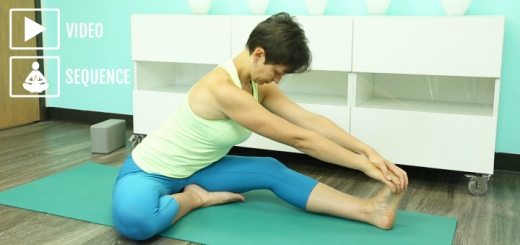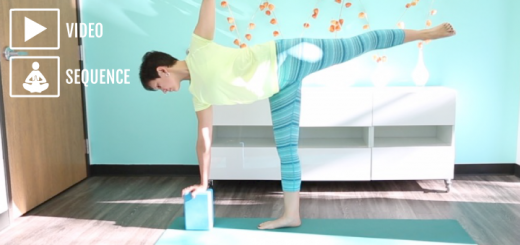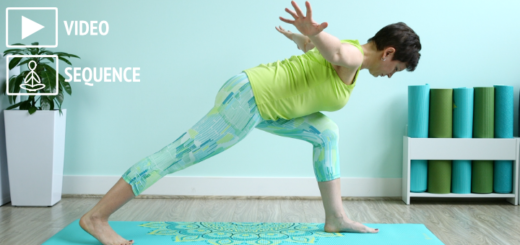New solution to an old problem practice
7Is there a challenge that you are dealing with right now, or a problem that you are trying to solve? If so, your natural inclination is probably to focus on the problem and try to work it out logically. This strategy can work to a point, but it can never generate big insights. Research shows that focusing on the problem more intensely doesn’t increase insights, it decreases them.
One reason for that is that we get locked into our specific way of thinking and keep recycling the same old solutions, tinkering with them around the edges. As a result, “the wrong answers are stopping the right answers from emerging.” Generating an insight involves forming completely new connections between pieces of previously unlinked information, and you cannot do that by “actively thinking” or drilling into details. Instead, taking a step back and taking an eagle’s view of the land can be very helpful in generating insights. So is taking your mind off the problem for while. That’s why taking a walk in the woods is a commonly used strategy for clearing the mind.
David Rock in his book Your Brain at Work: Strategies for Overcoming Distraction, Regaining Focus, and Working Smarter All Day Long summarizes the strategies that can help us generate insights:
- It is astonishingly easy to get stuck on the same small set of solutions to a problem, called the impasse phenomenon. Resolving an impasse requires letting the brain idle, reducing activation of the wrong answers.
- Having insights involves hearing subtle signals and allowing loose connections to be made. This requires a quiet mind, with minimal electrical activity.
- Insights occur more frequently the more relaxed and happy you are.
- Insights are more likely to occur if you focus on the connections between information rather then drilling down into the problem; look at patterns and links from a high level rather then getting detailed.
The yoga practice below utilizes all the strategies above to help you stop the mental noise and let the insights emerge. It is an integrative practice; it includes multiple yogic elements (asana, pramayama, chanting and meditation). Using breath, movement, sound and imagery helps to quiet the mind, facilitate a more relaxed mental state, process metal chatter and see your old problem in a new light.
Join Sequence Wiz to customize this practice to your liking. Choose your poses, enter the instructions and you are done! See it in action >
This practice has been added to Sequence Wiz home yoga practice app. You can find it under Mental-emotional state > Need clarity > 40-60 minutes. Learn more about the app >























That was interesting. I ended up pulling everything off the shelves and wanted to burn them all so was pleased when you said that was what we were going to do but afterwards I felt more tense and the only next steps that came to me were “nothing” and “cry”. So it didn’t help me see my problem any differently. I felt quite breathless all the way through too which surprised me; I think I was trying too hard to match my breaths with your instructions to chant so kept holding my breath to “catch up”. Maybe I need to try this again when I’m not so immersed in my problem (just trying to formulate it at the beginning was difficult). It was a much harder practice for me physically than many of your others too. So all in all, very interesting and not altogether pleasant! I will try it again in a few days and see if my experience is different. Thank you as always Olga for sharing your practices and ideas. X
Hi Rachel! Thank you for sharing your experience about the practice. You are bringing up an important point – our yoga practices are not always pleasant; and it’s OK. Many issues that we are dealing with are not pleasant, and stirring them up is not pleasant either. Imagine as if you were stirring a spoonful of sugar in a glass – it both makes the crystals cloud the water AND helps them dissolve. And once it all settles, may be you can see a bit more clearly. That’s the image I like to use. I also have few recommendations based on your comments. I did make the practice a bit stronger both for the purpose of preparing the body for longer siting AND to help anchor attention fully in the body. A bit of irritation at the physical challenge often helps distract us from thinking about the current issue 🙂 When it comes to chanting, please do not hold your breath. It can be a little tricky when following a teacher, since the teacher sets the pace, but you can just tune me out and take few extra breaths when necessary to keep breathing more free-flowing. By the way, the answer that you got after my prompting to envision your next steps “nothing” and “cry” – are you sure that this is not what would be helpful to you right now? I know nothing about your situation, of course, but in my personal experience I found that sometimes this is exactly what I need. Anyhow, if the practice intrigued you, I would recommend that you continue to experiment with it (without straining your breath) and see if your response to it changes. Please keep me posted!
Hi Olga thank you for your reply. I did the practice again this morning and found it a very different experience. I felt a lot more relaxed and fixed on one part of my work problem rather than all the emotion and things to do. Although I didn’t get a clear next step, I sort of got an idea and today at work I finished a project that’s been hanging over me for ages and I’m sure this practice helped me focus on being focused rather than on being in a panic. It’s still quite a tough challenge but I found pleasantness in it this time. Thank you x
This practice was exactly what I needed today. Thank you!! I’m also a Viniyoga student. I believe we met at IAYT last year, in Virginia.
Great to hear that Jacque! We probably did meet last year!😉
Hmm, first time that I physically, mentally didn’t like a practice. My dosha/Kapha wasn’t happy at all, grouchy after it, not a good morning practice for me, rather focus on breath/movement than a chant during asana. My teacher who studied directly with T.K.V. Desikachar employs chanting as a separate practice when learning the sutra’s, which I do enjoy.
So saying that, it was great to learn what works + doesn’t work for my constitution/even weather as it was a cold morning
I’ll try again as an evening practice + see what comes up. I learned a lot….thank you!
I loved this practice Olga. I am also a viniyoga graduate from Gary’s Therapy program. This practice reminded me of and took me back to the viniyoga days!! Thanks for taking such care in the sequencing and sharing. For me, it was difficult to bring in chanting with asana with my students. But I did so, just as we learned from Gary. I had mixed reviews, but over time, those who were ready, dove into it with eagerness and had deep transformation over time. Other students tolerated it, but weren’t interested.
About your practice, I plan to practice it again tomorrow!
Thanks again Olga 😉
Blessings